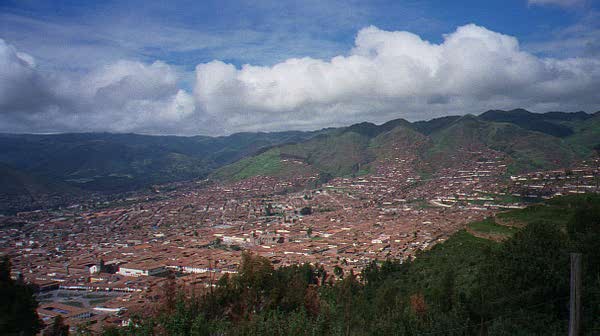
The city of Cuzco
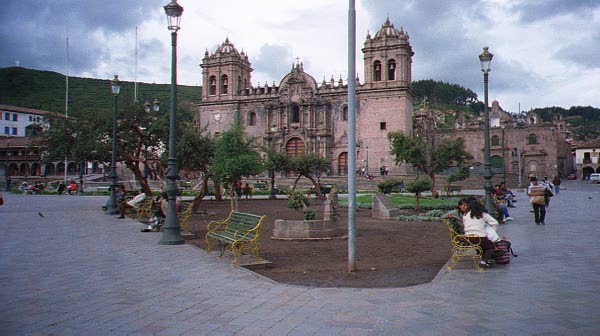
Cuzco's main square
Cuzco is a city situated high in the Andes (nearly 11,000 ft.) and is the old Inca capital. In fact, Cuzco is the oldest continuously occupied city in Peru. With it's matching red-tile roofs, the first view of the city is awe-inspiring. Stretching up the sides of the mountains, I was surprised to learn that it's the poorer people who get the view! Unlike the United States where positions among the hills are coveted, apparently the longer walk to the city is considered undesirable.


Cuzco's main square
Many Inca ruins exist along with the colonial and modern architecture of the city. Most notable is the Temple of the Sun where the church of Santo Domingo is built on the walls of the temple. The Inca's were incredible stone masons, constructing edifices of huge blocks of stone--some from quarries several miles and mountains away--without benefit of mortar or cement, or use of the wheel. I looked at some of the walls, completely amazed at the workmanship. I doubt with all our "modern" tools and methods of determining dimensions they could be reproduced today. Sadly, the Spanish dismantled many Inca buildings. Not only to provide themselves with building materials for their own structures (most notably churches), but in an effort to destroy places of native worship as well.

Our hotel was conveniently located a short walking distance from the center of town, which afforded plenty of shopping! Not only from shops along the brick-paved streets, but from street vendors as well. Typical native crafts were the most prevalent, namely wall hangings, sweaters, blankets and musical instruments. Our guide tried to educate us in the difference of "baby alpaca" and "maybe alpaca" sweaters. "Baby" alpaca is supposed to be yarn made from young alpacas, the camel-like animals raised for their wool and meat. "Maybe" alpaca has the hair of llamas added to the yarn which is undesirable. Llamas, while belonging to the same family as alpacas, have hair rather than wool and are used primarily as pack animals. While I had a bit of trouble distinguishing the differences between the animals based on their appearance, apparently they're quite easy to tell apart. I guess I needed to spend a little more time with them to pick an alpaca out in a crowd!

We had three days scheduled for Cuzco, and I was wondering how we were going to fill them all. I was surprised how much there was to see in the area! In fact, there are many sites we didn't have time to see. Some of the notable ruins were Saqsaywayman, the royal house of the sun built on a mountain overlooking Cuzco. The city was originally laid out in the shape of a puma (an animal sacred to the Incas) with Saqsaywayman being the head of the puma. Apparently that's the explanation for the zigzag walls--they were symbolic of the puma's teeth. Two other animals, the condor and the anaconda were also sacred to the Incas, representing the upper and lower worlds, respectively.
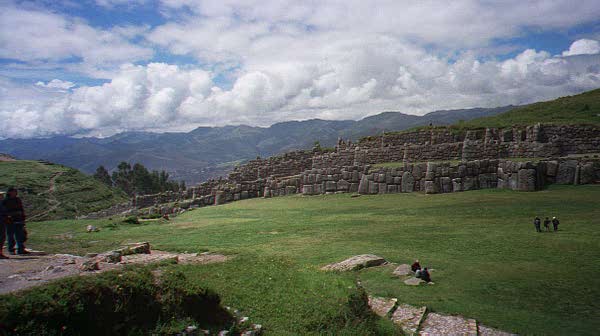
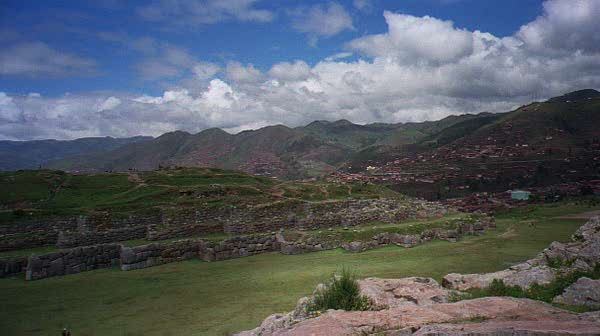
Other historic sites included Pukapukara, meaning "red fortress." Military headquarters and a store house for food. Q'enqo, a religious site that meant "labyrinth." Here priests studied the movements of the sun and stars. Tambomachay, the bath of the princess where a natural spring still flows today.
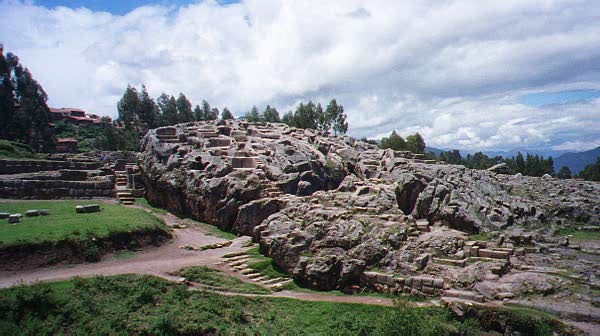
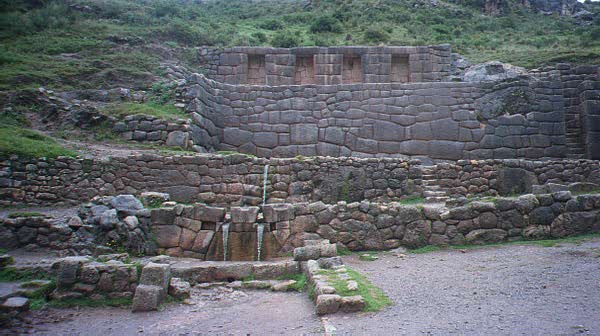
Tambomachay
And the village of Pisaq, first established by the Spanish. While there are several ruins in the mountains surrounding the old city of Pisaq, we didn't have time to visit them. However, the village was a delight with an open market featuring local handicrafts, most notably pottery. We also had a visit to a bakery, where a type of empanada is baked in a wood-fired stone oven. The wrapper for the empanada was more bread-like and contained sweet red peppers and cheese--It was almost like a pizza without the sauce. Our guide informed us that if there was a bread basket hanging out side the door on a pole, that meant the bakery was "open for business," having goods for sale. The majority of our time in Pisaq was spent exploring the market, bartering for goods. Many local people were there that day as well, buying and selling meat and produce. I recognized most of the food offered for sale, but when I saw a frozen block of chicken heads, I wished I hadn't been so curious about their food! I was told later they were used to make soup. Kind of changes your mind about chicken noodle after that!
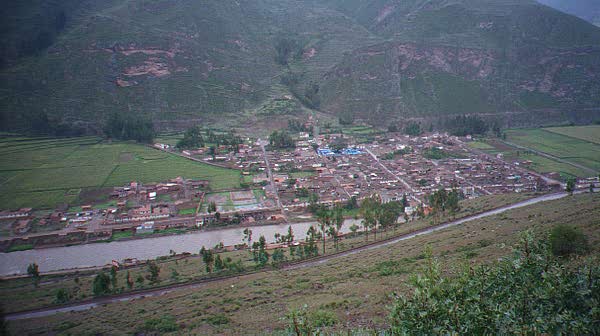
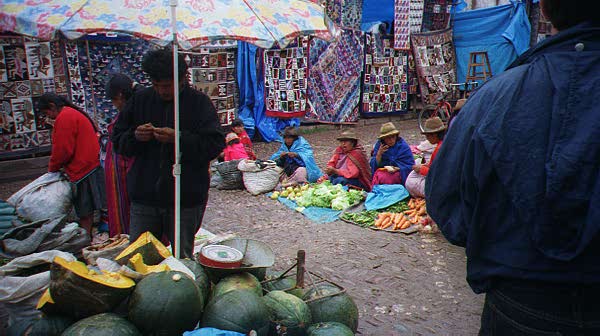
Native produce for sale